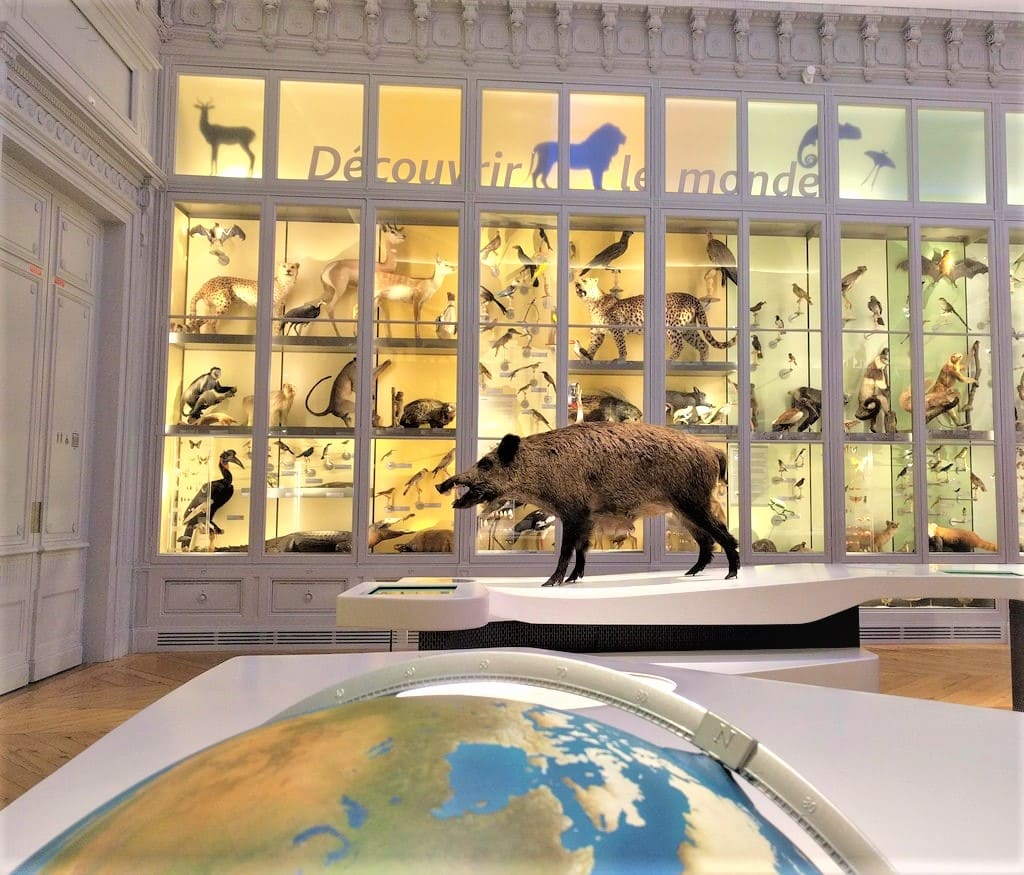Spanning from the foyer all the way up to the Souverbie Gallery on the second floor, the Museum of Bordeaux’ permanent exhibition presents the glorious richness of our planet’s biodiversity. There you can observe the diversity of colour, the difference in sizes and the variety of natural habitats all over the world. From continent to continent, nature is everywhere. Maternal, threatening, exploited or venerated, nature is a reflection of humans. Humankind has established its place in the natural world, a world that it has drastically altered and yet is reliant upon for its survival.
The permanent exhibition presents a large number of themes.
Amazing diversity
Observable diversity is the first and most immediate approach to exploring the natural world, a source of wonder and surprise. Size, shape and colour offers a first frame of comparison between environments. Explore all of this starting from the foyer, then ascend the main staircase to the gallery on the 2nd floor where the exhibition continues.
Exploring the world
The 15th century opened up a whole new age of discovery. Voyages offered an opportunity to observe wildlife in nature.
The first section of the gallery presents these voyages and the richness of animal diversity by continent: Europe first, initially the best known; then Africa, a vast land of extraordinary wildlife; Madagascar with its remarkable endemism; Asia, a continent of contrasts, followed by the Americas, Oceania and, lastly, the polar regions.
Exploring time
Fossils preserved in geological strata are like archives of the living world, ancestral traces of today's species. Since the 19th century, the presence, association and disappearance of fossils have helped determine periods of time. They provide evidence of past environments and lend a helping hand in writing the evolutionary history of species.
Collecting is choosing
The collections are a reflection of scientific enquiry through the years and the main questions of the time. The choice made were based on physical constraints: size, rarity, legislation as well as the development of techniques for conserving and displaying objects. Choices and techniques are illustrated by representative specimens. One display shows how collections were exhibited before the Museum of Bordeaux was renovated.
Classifying living organisms from past to present
The classification method used today is the result of objectives which have evolved over time. From ancient philosophers and 18th and 19th century naturalists to palaeontologists, systematists and geneticists in the 20th and 21st century, human minds have all sought to understand ‘the order of nature’.
Classification based on relationships
Cladistics is a method of biological classification based exclusively on shared characteristics between species and represents their relationships. It is the system used today to classify living organisms.
The exhibition aims to demonstrate how groups fit together and are related to one another.
Exploiting and preserving nature
The collections on display, supported by the multimedia devices provided, explore the ways in which humankind has exploited nature, in particular through domestication and the impact of human activity on biodiversity resulting in extinct or threatened species.








